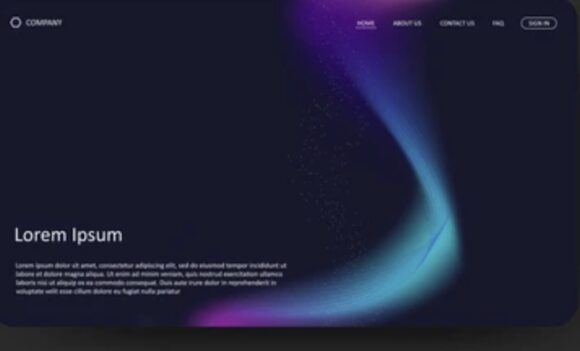A/B testing, what a curious bit of digital alchemy! At its core, it involves comparing two versions of the same web page (let’s call them A and B) to see which one performs better in terms of user engagement. It’s like a digital showdown where the real winner is better conversion rates.
Why focus on landing pages, you might ask? Well, think of landing pages as your brand’s front door in the digital realm. They’re the first stop potential customers make after clicking an ad or a search result. A slick, well-optimized landing page can mean the difference between a curious visitor clicking ‘close’ or diving deeper into what you offer.
When we talk about A/B testing for landing pages, we’re really diving into the science of optimization. It lets us test hypotheses about design, content, and layout in a structured way, giving us data-driven insights about what truly clicks with our audience. So, instead of guesswork, decisions are grounded in actual user behavior.
This approach provides a clear roadmap for improving key performance indicators (KPIs) like click-through rates, conversion rates, and even time on page. Each test offers new data and, ultimately, a better understanding of what your visitors resonate with.
Feeling a bit overwhelmed? Don’t worry, A/B testing is more straightforward than it sounds. Once you’re set up, it becomes a cycle of experimentation and learning, leading to a more engaging and effective landing page that works for you, not the other way around.
The Process of Landing Page A/B Tests
Starting the A/B testing process can feel like stepping into a whole new world, but it’s really not that complicated. The first step is deciding what you want to test. Could be the headline, the call-to-action, or even the color scheme. Pick something specific, so you know exactly what you’re measuring.
Once you’ve nailed down what to test, it’s time to create the two versions. Version A is usually your current setup, while Version B has the new feature you want to try. It’s crucial to keep the change small and focused on one element at a time, so you know exactly what’s causing any difference in behavior.
Now, let’s talk about metrics. You’ll want to set clear goals for what success looks like. Are you aiming for more clicks, sign-ups, or maybe just getting people to stick around longer? Whatever it is, define it before you start testing, so you’ve got a clear target.
You’ll need a tool to manage and track your A/B test. Google Optimize, Optimizely, or even some features in Google Analytics get the job done. These tools will help you split your traffic evenly between versions A and B, keeping everything fair and square.
As the test runs, it’s important to gather enough data to make sure the results are reliable. Rushing to conclusions can lead to decisions based on fluke occurrences. Giving the test enough time is key to getting statistically significant results.
When the data starts rolling in, it’s time to measure the success against your defined metrics. But remember, not all tests will be winners. Sometimes, you’ll find that the original performs better. That’s okay. A/B testing is all about learning and improving continuously.
In the end, whether you come out with a clear winner or valuable insights into what your audience isn’t into, each test will provide a building block for future improvements. Keep experimenting, keep learning, and let the results guide your next steps.
Important Tips for Effective A/B Testing
Creating a solid A/B testing plan is your ticket to meaningful results. First off, it’s crucial to know exactly what you’re looking to improve. Whether it’s the click-through rate or just user engagement, having a clear goal sharpens your focus.
Nailing down your audience is another key detail. Who are you talking to? Different groups might react in wildly different ways to the changes you’re making, so it’s important to segment your audience accordingly. Doing so ensures the test results are relevant to the group that matters most to your goals.
Watch out for common traps. Avoid testing too many elements at once. It might be tempting to overhaul everything shotgunned style, but remember, if you change five things at once, pinpointing what’s causing an improvement (or a decline) can become nearly impossible.
Keep the duration of your test in mind. Running a test for too short a period can lead to misleading results. You want enough people to see both versions so the data you collect is robust and reliable. Also, after starting the test, resist the urge to tweak things mid-way. Changing the parameters can skew the results and waste a lot of time.
When the numbers look right, don’t forget about statistical significance. Finding out whether your results come from random variation rather than actual impact is crucial. Aim for confidence levels that give you peace of mind about your decisions.
And, don’t plan on a specific outcome. Sometimes even the best-laid plans reveal unexpected results. That’s part of the charm of A/B testing – it often surprises you. Be prepared to learn from both the wins and the losses.
Lastly, keep in mind that no test is a complete failure if you learn something. Each result adds to your understanding of what works and what doesn’t. Over time, these insights add up, leading to a more effective marketing strategy.
Strategies for Optimizing Landing Page Performance
When it comes to fine-tuning landing pages, understanding the elements that make a splash is crucial. Focus on key components like headlines, images, call-to-action buttons, and overall layout. Each has the potential to drastically influence how visitors interact with your page.
Prioritize changes that align with your primary goals. If boosting sign-ups is your aim, consider tweaking the sign-up form’s design or visibility. For e-commerce sites, spotlighting products or offering limited-time deals might push hesitant buyers over the finish line.
Minimizing risks while maximizing rewards is all about smart testing choices. Start with elements that have the highest visibility or the most direct impact on conversion. Improving these touchpoints can lead to quick wins and valuable insights.
Incorporate user feedback whenever possible. Visitors often know best what frustrates or delights them. Tools like surveys and user testing can uncover blind spots, helping you focus A/B tests on areas with the most potential for improvement.
Turning data into action is where the magic happens. Once a test reveals a winning variant, take the lessons learned and apply them across similar pages. Consistency is key in delivering a cohesive user experience that builds trust and keeps people engaged.
Remember, optimization is an ongoing process. The digital landscape shifts rapidly, and yesterday’s best practices might not work tomorrow. Keeping an eye on industry trends and continuously testing new ideas ensures your landing page doesn’t get left in the dust.
Understanding Split Testing vs. A/B Testing
The world of testing is pretty varied, and while A/B testing gets a lot of the spotlight, split testing plays a significant role too. The key difference is scope. Split testing involves making changes to more than one element simultaneously, effectively testing two different page experiences against each other.
Split testing works great when you’re looking at wholesale changes, like trying out a completely new layout or design. It gives you a full picture of how an entirely new concept might perform compared to the existing one.
Choosing between split and A/B testing often boils down to the depth of change you want. If you’re adjusting a single feature like color or text size, A/B testing is the way to go. But, if you’re considering a total overhaul of the page’s layout or elements, split testing can provide more comprehensive insights.
One of the perks of split testing is it can illuminate how different combinations of elements interact with each other. This can reveal opportunities for optimization that might not surface with A/B testing alone.
That said, the two methods aren’t mutually exclusive. You might start with a split test to lock in a new layout direction, then switch to A/B testing to fine-tune individual elements. Think of them as complementary tools in your testing toolkit, each serving different purposes but working best in tandem.
When applying split tests, remember to maintain consistency in other areas of your marketing to accurately gauge what changes are driving user responses. This strategy makes it easier to correlate the wins or losses directly to the design changes, giving you clear evidence of what truly clicks with your visitors.
Implementing A/B Testing Best Practices
Getting into the groove of A/B testing involves having a solid checklist at your side. Start with clear objectives for each test, like boosting conversion by a certain percentage or improving engagement metrics. Knowing what success looks like helps keep you on track.
Use control groups to measure the performance of your tests accurately. Without them, it’s tough to tell if your changes are making the desired impact or if other factors are at play. Control groups act as your baseline, highlighting the real effects of your adjustments.
Analyzing and applying results is a crucial juncture. Dive into the data and look for patterns or insights that step out. Did a new headline outshine the old one? Maybe a button color change led to better click-through rates. Each piece of data weaves a story, giving you clues about what works.
Learn from case studies of A/B testing triumphs. Real-world examples can spark ideas and illustrate how abstract concepts translate into actionable strategies. They’re practical evidence that innovative tests can lead to tangible business gains.
Document everything, from test setup to final analysis. Maintaining detailed records not only helps you replicate successful tests but also provides a framework for future projects. Keeping well-organized documentation supports a culture of learning and optimization, helping you build a repository of insights.
Design tests to be scalable. Start small, but think about how success could be magnified across different pages and channels. By creating tests with scalability in mind, you ensure that valuable insights can be applied more broadly, maximizing their impact across your brand’s digital presence.
Improvement with A/B Testing: Real-World Examples
Seeing A/B testing in action can really shine a light on its effectiveness. Many companies have used these tests to shake things up in remarkable ways. Take Airbnb, for instance. They redesigned their property listings with images taking center stage and enhanced descriptions. This wasn’t just a guesswork; it stemmed from extensive A/B testing that pinpointed what users found engaging and helpful.
Then there’s Netflix. Every change in their interface often follows heaps of A/B tests ensuring each tweak, from thumbnail images to page layouts, caters to maximizing engagement and keeping viewers glued to their screens.
Amazon, the e-commerce giant, constantly uses A/B testing to optimize product pages. They’ve tested everything from button colors to page layouts. Even seemingly minor details like what ‘Buy Now’ buttons look like have undergone rigorous testing, all to better meet user needs and boost sales.
These are just snapshots showing how different industries utilize A/B testing to refine user experience and drive metrics that matter to them. The beauty of A/B testing lies in its flexibility; whether you’re a SaaS, a retail giant, or a media platform, each test can be tailored to meet unique business goals.
Learning from these real-world examples highlights a crucial insight: it’s okay to try, fail, learn, and tweak based on feedback. Those A/B tests you try could open doors to breakthrough strategies and innovations.
Keep in mind that the insights gained from these tests can lead to discoveries that go beyond immediate numbers. Often, they unveil unexpected behaviors or preferences that guide broader strategic decisions within a business. It doesn’t just enhance a single page but informs a spectrum of user experience improvements across the platform.
Conclusion: Moving Forward with Confidence
Wrapping up an A/B testing journey brings big insights. Tests align with business goals through real data and fresh changes are crafted with precision instead of guesses.
The outcome of consistent A/B testing isn’t just higher conversion rates or more clicks. It’s about weaving a cycle of constant improvement. Each test leads to insights that guide the next steps, refining strategies that resonate with audience tastes, needs, and wants.
Staying proactive with testing is vital. The digital landscape is always evolving, and while you’re nailing today’s trends, new ones are likely lurking around the corner. Encouragement to adapt and adopt new tactics not only keeps you relevant but ahead of the curve.
This is about more than improving a single landing page. It’s building a repository of knowledge that strengthens marketing strategies as a whole. Every nugget of insight contributes to a brand’s competitive edge.
In the end, testing empowers. Arming yourself with data-driven insights builds the confidence to explore and adapt strategy, supporting a business’s growth and enhancing visitor experience.
Then it’s about enjoying the journey. The dynamic of digital marketing isn’t just about numbers and percentages. It’s about innovation, creativity, and offering value to every click on your site.
Continue testing, learning, and adjusting. Confidence with A/B testing means knowing that every experiment, successful or not, contributes to a richer understanding of your users. More importantly, it sets up future successes as you travel this ever-exciting path of digital growth.









Hi — thanks for this great overview of A/B testing landing pages! I especially appreciated the sections on clearly defining your goal before testing, keeping changes small so you know what exactly causes the difference, and making sure results are statistically valid. These are often overlooked but make such a big difference.
One thing I wondered: have you ever tried combining user feedback (like surveys or usability testing) before running an A/B test to generate hypotheses about what to test? Do you find that gives more powerful tests than just relying on intuition or analytics alone?
Thanks so much for the thoughtful feedback — I’m glad those points resonated with you! You’re spot on about combining user feedback with A/B testing. In fact, I’ve found that surveys, usability testing, and even quick customer interviews can be a great way to uncover why people behave the way they do on a page. That often leads to stronger hypotheses than just relying on analytics or intuition.
For example, analytics might tell you where drop-offs happen, but talking to users can reveal the friction point that caused it — like confusing copy or a form field that feels too personal. Testing changes based on those insights tends to make experiments more impactful (and often saves time by avoiding random guesses).
Do you also use feedback to prioritize what to test first, or more as a way to validate ideas before diving into experiments?